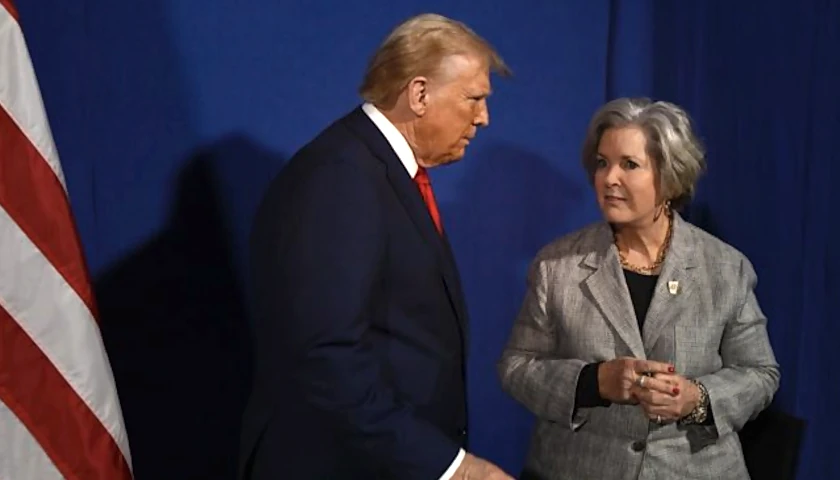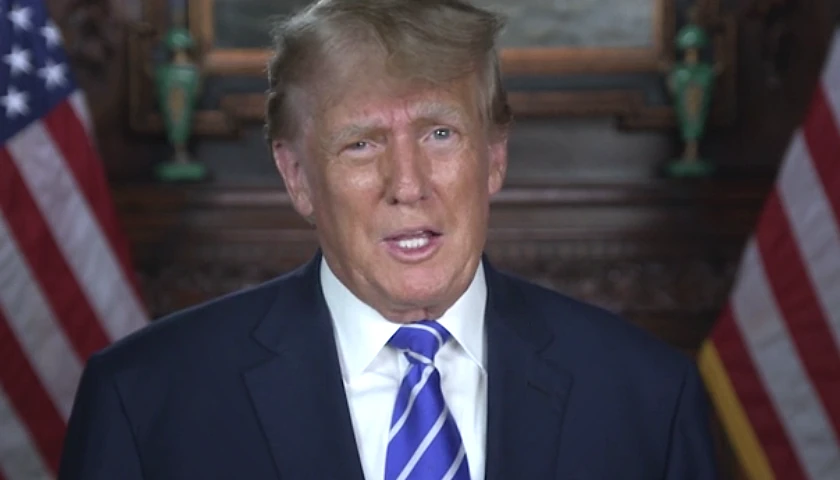Enrollment in Catholic schools in the United States has risen for the first time in two decades after teachers’ unions worked with the Biden administration to keep government schools locked down during the COVID-19 pandemic.
The enrollment rise since last year by 3.8 percent, or 62,000 students, in Catholic elementary and secondary schools, is also the largest surge recorded in at least 50 years by the National Catholic Educational Association (NCEA), the Associated Press reported in February.
“Catholic schools’ dedication in safely opening classrooms and supporting their communities’ needs last year is demonstrated in the 3.8% increase in enrollment,” NCEA said.
Catholic schools safely and efficiently met the needs of their communities over the past two years. Safe in-person learning throughout the pandemic appears to have been central in driving the enrollment increase. https://t.co/B5NkJAo7Q6 pic.twitter.com/buNHt9ippg
— NCEA (@NCEATALK) July 12, 2022
Kathleen Porter-Magee, the superintendent of Partnership Schools, a privately managed network of Catholic elementary schools in Harlem and the South Bronx in New York, and Cleveland, Ohio, explained the rise by 3.8 percent in Catholic elementary and secondary schools at the Jesuit publication America:
The enrollment boost was driven in large part by the leadership Catholic schools showed in returning to in-person learning a full year before many of their public school counterparts. But if we want to turn this enrollment rebound into enduring growth, we will have to double down on what makes our schools unique — and what makes them so critical to the broader ministry of the church — while removing the barriers that make our schools inaccessible to too many.
Porter-Magee, who is also an adjunct fellow at the Manhattan Institute, observed that Catholic schools were established in America 150 years ago when overt anti-Catholic bigotry led to subsidization of schools by Catholic parishes.
“But the schools became so effective that they attracted far more than the Catholic children they were established to serve,” she noted, adding they have grown to have earned praise for “being among the best schools of any type – safe, academically rigorous and grounded in enduring values,” for families regardless of income level and faith background.
But, in March 2020, the COVID crisis shut down schools, leaving many unprepared to organize and train teachers and families for online classes.
Children accustomed to attending brick-and-mortar schools suffered academically, socially, and emotionally as the school shutdowns continued.
At the bidding of teachers’ unions, government schools continued to remain closed the following fall and into the next semester in 2021.
In March of this year, House Republicans even discovered apparent collusion between the Centers for Disease Control and Prevention (CDC) and the American Federation of Teachers (AFT).
🚨 Just exposed a CDC official’s testimony confirming CDC coordinated with unions at unprecedented levels to keep kids out of school.
We now know Biden's political leadership at CDC let unions impose line-by-line edits.
It was never about "The Science." https://t.co/Qufe24Uy1m
— Steve Scalise (@SteveScalise) March 30, 2022
Republican leaders noted the CDC’s collaboration with the teachers’ union that kept government schools closed was “unprecedented,” given the health agency’s past practices of keeping draft guidance confidential.
Catholic schools, however, reopened in fall 2020, even well before the American Rescue Plan Act’s billions of dollars were released supposedly to help schools reopen safely, Porter-McGee observed, adding:
While children were facing an “epidemic of loneliness” even before Covid, the prolonged school closures exacerbated the challenge, and the number of children struggling with mental health challenges has risen over the past three years. An increasing number of families have responded by seeking out the kind of safe, values-driven and character-centered education that Catholic schools are uniquely positioned to offer.
Porter-McGee urges Catholic schools to continue the upward trend in student enrollments by, first, openly publicizing the “kind of values-driven, principled leadership that drove the Catholic schools response to Covid in 2020 and 2021.”
Many parents are fed up with government schools that have continued COVID mask mandates and have been infiltrated by Critical Race Theory and LGBTQ activism.
Former New York City Mayor Michael Bloomberg (D) recently asserted teachers’ unions were responsible for keeping schools locked down during the pandemic, a move that led to the mass exodus of students from public schools throughout the country.
Writing at Bloomberg News, the former mayor observed 1.3 million students have left government schools since the start of the pandemic in March 2020.
A Gallup poll released in July found only 28 percent of Americans have either “a great deal” or “quite a lot” of trust in U.S. public schools, down 4 percentage points from last year’s 32 percent, and a drop from 2020’s 41 percent.
Republicans’ confidence in public schools has plummeted from 34 percent in 2020 to 20 percent in 2021, and now to 14 percent in the most recent survey, while Democrats’ trust in public schools has dropped to 43 percent since 2020, when it was 48 percent.
Independent voters’ confidence in public schools has also declined from 38 percent in 2020 to 29 percent in 2022.
Porter-Magee calls upon Catholic schools to increase enrollment further by bringing “the same creative problem-solving they brought to pandemic leadership — clearing a glide path to reopening schools and balancing safety with the need for in-person learning — and apply it not just to marketing, but also to admissions and enrollment.”
Pointing to some of her own learned lessons with Partnership Schools, the superintendent noted the “academic and paperwork barriers to entry” that had been developed “were so high that we were unintentionally driving away exactly the families we most wanted to serve.”
Partnership subsequently altered its bureaucratic requirements, opting now for a two-page financial form that parents can complete onsite in order to learn how much financial aid they are eligible to obtain immediately:
This shift positioned us perfectly to make the most of the increased demand Catholic schools experienced in 2021, and it has allowed us to continue to increase enrollment into 2022-2023. (As of publication, we are on track to increase enrollment for the upcoming year by another 4 percent.) This even as the New York City student population declined and as public schools across the city “hemorrhaged” students.
“And by reducing barriers to entry and streamlining admissions, while deciding not to increase tuition and fees during the crisis, we actually increased tuition revenue while extending our mission to serve an even greater number of needy children,” Porter-Magee added.
– – –
Susan Berry, PhD, is national education editor at The Star News Network. Email tips to [email protected].




